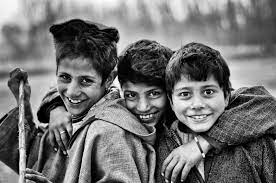Case study Chapter 3 (Matrix)
Case study 1:- Read the following and answer the question(Case study problem matrix 1)
A manufacturer produces three stationery products Pencil, Eraser and Sharpner which he sells in two markets. Annual sales are indicated below

|
Market |
Products (in numbers) | ||
|
Pencil |
Eraser | Sharpner | |
|
A |
10,000 | 2,000 |
18,000 |
| B | 6,000 | 20,000 |
8,000 |
If the unit sale price of Pencil, Eraser and Sharpner are ₹ 2.50, ₹ 1.50 and ₹1.00 respectively, and unit cost of the above three commodities are ₹ 2.00, ₹ 1.00 and ₹ 0.50 respectively, then,
(i) Total revenue of market A is
(a) ₹ 64,000 (b) ₹ 60,400
(c) ₹ 46,000 (d) ₹ 40,600
(ii) Total revenue of market B is
(a) ₹ 35,000 (b) ₹ 53,000
(c) ₹ 50,300 (d) ₹ 30,500
(iii) Cost incurred in market A is
(a) ₹ 13,000 (b) ₹30,100
(c) ₹ 10,300 (d) ₹ 31,000
(iv) Profit in market A and B respectively are
(a) (₹ 15,000, ₹ 17,000) (b) (₹ 17,000, ₹ 15000)
(c) (₹ 51,000, ₹ 71,000) (d) (₹ 10,000, ₹ 20,000)
(v) Gross profit in both market is
(a) ₹ 23,000 (b) ₹ 20,300
(c) ₹ 32,000 (d) ₹30,200
Solution: (i) Answer (c)
Total revenue for market A

= 10,000×2.50 + 2000×1.50 + 18000×1.00
= ₹46000
(ii) Answer (b)
Total revenue for market B

= 6,000×2.50 + 20,000×1.50 + 8000×1.00
= ₹ 53000
(iii) Answer (a)
Cost incurred in market A

= 10,000×2.00 + 2000×1.00 + 18000×0.50
= ₹ 31,000
(iv) Answer (a)

= 6,000×2.00 + 20,000×1.00 + 8000×0.50
= ₹ 36,000
Profit in market A = ₹ 46000 – ₹ 31000 = ₹ 15000
Profit in market B = ₹ 53000 – ₹ 36000 = ₹ 17000
(v) Answer (c)
Gross profit = Profit in market A + Profit in market B
= ₹ 15000 + ₹ 17000
Case study 2:- Amit, Biraj and chirag were giventhe task of creating a square matrix of order 2. Below are the matrices created by them. A, B, C are the matrices created by Amit, Biraj and Chirag respectively.(Case study problem matrix 2)

Solution: For solution click here
Case study 3:- Read the following and answer the question:(Case study problem matrix 3)
Three schools DPS, CVC and KVS decided to organize a fair for collecting money for helping the flood victims. They sold Handmade fans, Mats and plates from recycled material at a cost of ₹25, ₹ 100 and ₹50 each respectively. The number of articles sold are given as.

Solution: For solution click here


